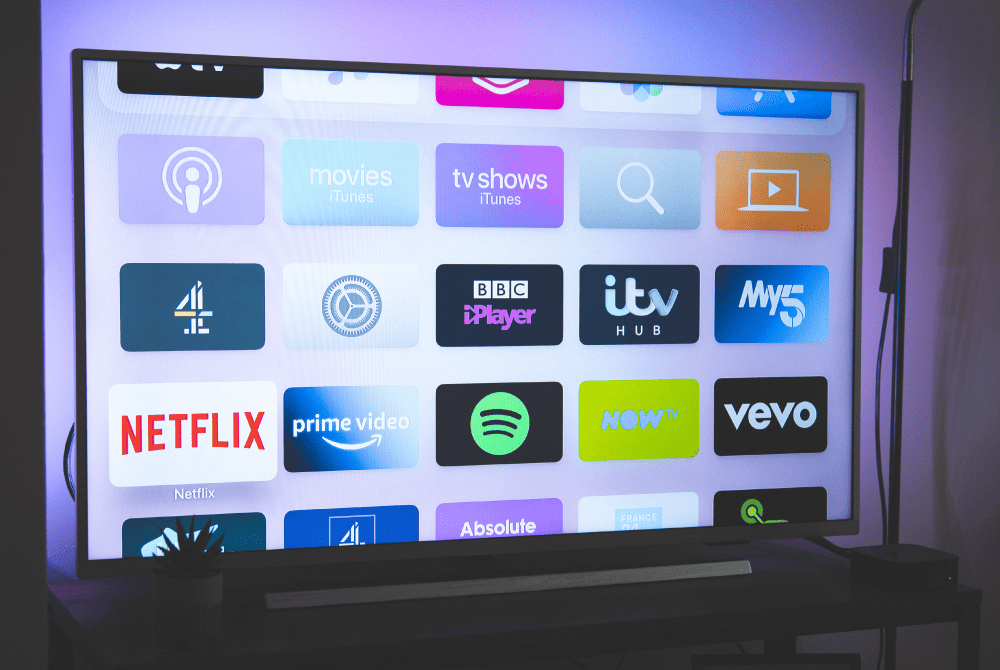In the digitally-driven landscape of today, over-the-top (OTT) platforms have transformed the realm of entertainment consumption. Streaming services such as Netflix and Hulu, along with video-on-demand platforms like Amazon Prime, have become the preferred choice for countless viewers globally. But what metrics do these platforms use to gauge their success? This is where OTT Key Performance Indicators (KPIs) come into play.
Understanding the Value of OTT Metrics
Recognizing and comprehending the significance of OTT metrics is vital for streaming platforms and services to enhance user experiences. These metrics offer insights that inform decisions regarding content production and delivery. By monitoring behavioral and growth metrics, OTT platforms can assess the effectiveness of their marketing initiatives and make informed choices to boost audience engagement. Furthermore, OTT analytics allow for the evaluation of advertising campaign efficacy, optimization of revenue per user, and the achievement of a higher return on investment. Analyzing key metrics in real-time and over specified periods enables platforms to better understand their user base and customize their offerings and business models accordingly. Harnessing the power of OTT data, platforms can accurately predict user preferences and deliver high-quality, relevant content to their audience, ensuring a seamless and enjoyable streaming experience.
Subscribers
Total Subscribers
The total subscriber count is a fundamental metric that indicates the reach and popularity of an OTT platform. It provides a baseline for assessing market penetration and brand recognition. Tracking the subscriber count over time aids platforms in understanding their growth trajectory and market share, serving as a gauge for overall success.
Subscriber Growth Rate
The subscriber growth rate reveals the platform’s momentum by indicating the rate of expansion of the subscriber base. It’s a reflection of the platform’s appeal and the success of marketing strategies. A positive growth rate signifies health, while a declining rate may indicate underlying challenges that require attention.
Lifetime Value of a Subscriber (LTV)
LTV calculates the revenue generated from a customer throughout their entire relationship with a streaming platform. It aids in understanding the long-term value of customer acquisition and retention efforts, as well as the ROI for each subscriber. A high LTV indicates a sustainable business model, while a low LTV may necessitate reevaluation of pricing or content strategies.
Churn Rate
Churn rate quantifies the percentage of subscribers who cancel their service within a specified period. It signals customer dissatisfaction and can help pinpoint areas for improvement in user experience, pricing, or content library. By closely monitoring churn rate and implementing strategies to mitigate it, OTT platforms can retain more users and increase their revenue per user.

Engagement
Active Users
This metric denotes the number of individuals actively engaging with a streaming platform within a specific timeframe. High numbers of active users denote a platform with regular viewership, which is essential for sustained success.
Number of Sessions Per User
This metric gauges the engagement and satisfaction levels of users on an OTT platform. It represents the frequency of user visits to the platform within a specific timeframe, providing valuable insights into user behavior, preferences, and the overall user experience.
Average Watch Time
AWT measures the duration viewers spend streaming content. It’s an indicator of viewer engagement and content appeal. Longer watch times suggest captivating content and a positive user experience.
Content Completion Rate
CCR calculates the percentage of users who view a piece of content in its entirety. By analyzing CCR, streaming services can gauge user preferences, identify gaps in their content offerings, and optimize their content production strategy. A high CCR indicates a satisfied user base and a successful streaming service.
Binge-Watching Behavior
Binge-watching behavior reflects the tendency of viewers to consume multiple episodes or videos in one sitting. It’s a strong indicator of high user engagement, prolonged content consumption, and potentially higher revenue per user.
Experience & Content
Types of Content and Library Size
The size and diversity of the content library are crucial for attracting and retaining a broad audience. A diverse library caters to various tastes and preferences, enhancing user satisfaction and platform appeal. Original content often serves as a unique selling point for OTT platforms. Identifying trending content helps platforms comprehend viewer preferences and cultural zeitgeist.
Video Startup Time
Video startup time (VST) directly impacts user experience and satisfaction. It measures the time taken for a video to start playing after a user clicks on it. Extended startup times can result in frustration, abandonment, and a negative perception of the platform.
Buffering Rate
Buffering rate refers to the interruptions or delays during playback caused by data buffering. Frequent buffering can lead to user frustration, increased churn rates, and decreased revenue per user. Thus, monitoring and optimizing buffering rates are imperative to provide a smooth and uninterrupted viewing experience.

Livestream Latency
Livestream latency is the delay between the camera capturing an event and the event being displayed to viewers. When setting up a live stream, consider how the level of latency may affect viewers. This is especially critical when expected interaction is involved, as latency can lead to frustration and abandonment.
Popularity Index
Content is paramount in the OTT industry, and evaluating content performance is essential for delivering a successful streaming experience. Metrics such as the popularity index, content rating, and user reviews assist in identifying popular genres, actors, or directors and in creating content tailored to viewer preferences.
Revenue & Monetization
Average Revenue Per User
ARPU measures the revenue generated from each subscriber, indicating the platform’s earning efficiency. A high ARPU suggests a strong monetization strategy, while a low ARPU may indicate a need for pricing or content strategy adjustments.
Cost Per Acquisition (CPA)
CPA calculates the cost of acquiring a new subscriber, encompassing marketing and promotional expenses. Monitoring CPA helps in optimizing marketing strategies and ensuring a positive ROI on user acquisition efforts.
Ad Revenue
It reflects the platform’s attractiveness to advertisers and its ability to effectively monetize viewer attention. By understanding these metrics, OTT platforms and services can assess and pivot their strategies to optimize advertising revenue generation.
Ad Impressions & Click Through Rate
These metrics evaluate the effectiveness of advertising on a platform. Ad impressions measure the visibility of ads, while CTR indicates user engagement with ads. High CTRs suggest successful targeting and ad relevance, contributing to advertising revenue and enhanced ROI.
Conversion Rate
The conversion rate measures the effectiveness of converting free or trial users into paying subscribers. It provides insights into the appeal of the platform’s content and service offerings. A high conversion rate signifies a compelling value proposition and successful user acquisition strategy.
The Role of a Reliable Content Delivery Network (CDN) Provider
A reliable Multi-CDN provider, like Mlytics, plays a crucial role in optimizing key OTT metrics. By leveraging a network of geographically distributed servers, Mlytics can deliver content to end-users quickly and efficiently, reducing startup time and minimizing buffering. Additionally, Mlytics Multi-CDN’s infrastructure can help minimize live stream latency, providing a seamless and real-time experience for viewers. Through the partnership with a reliable CDN provider, OTT platforms can enhance user experience, increase audience engagement, and improve critical metrics that drive success. The Mlytics platform provides real-time analytics and actionable insights into viewer experience and video stream performance metrics, which make OTT platforms’ life easier when making educated decisions about optimizing all the KPIs.
Conclusions
To succeed in the OTT arena, it’s imperative to have a killer combo of great content, an engaging user experience, and spot-on personalization. This winning formula requires an integrated approach of technology, data, and analytics to monitor viewer engagement, preferences, and interaction levels. As you devise your strategy, it’s essential to establish three primary objectives: delivering unparalleled value to your customers, fulfilling your users’ needs and expectations, and achieving your business targets to realize a substantial return on investment.



